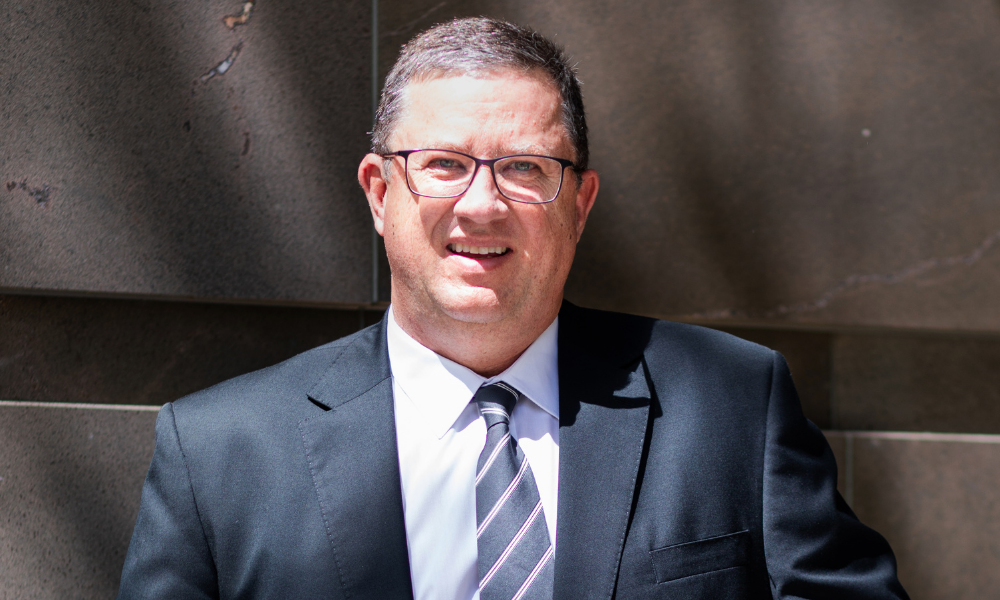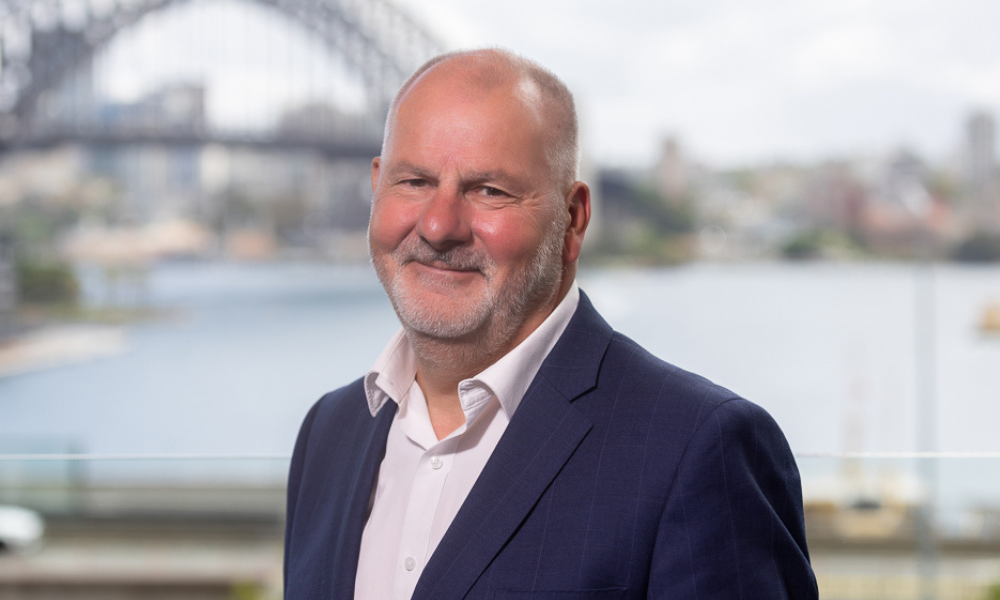Repayment timeframe deemed important

The ability to use retirement savings towards a first home deposit is drawing favorable response from the mortgage broking industry.
Ahead of the 2022 federal election on Sunday, the Morrison government announced a Super Home Buyer Scheme. It would enable first home buyers to use up to 40% of their superannuation funds (capped at $50,000) for a deposit, requiring them to stump up 5% in separate savings.
The scheme could be used for new and existing homes, and funds would be returned to their superannuation fund upon the sale of the home, including a share of the capital gain.
The Morrison government said the proposed scheme, to start by July 01, 2023, would slash the time required to save a deposit by “three years, on average”, helping Australians get on to the property ladder sooner.
Read more: Mortgage industry insiders share election wish list
MFAA CEO Mike Felton (pictured above) said the MFAA welcomed the first home buyer scheme as it would help people struggling to save a deposit and introduce greater flexibility to superannuation.
Under current rules, superannuation can be used to buy an investment property. Felton said it made sense that funds could also be used by owner-occupiers.
“Looking at current superannuation rules, there’s not a lot of flexibility. This certainly treats an individual’s wealth more holistically,” Felton said.
Until now, for someone that hadn’t acquired property, there was very little incentive to maximise concessional super contributions, which was a very tax-efficient way to save, Felton said. The downside was funds couldn’t be accessed until retirement.
“By introducing this ability, in effect, further incentivizing those to take advantage of concessional contributions in the knowledge that they will be able to get up to 40% back, to a maximum of $50,000 in order to invest in property when the time is right,” Felton said.
Until now, he said most have tried to keep their money outside of the system to accumulate a deposit. Appropriate checks and balances such as repayment of funds upon the property sale would ensure funds would continue to be earmarked for retirement.
Bank Australia relationship manager third party distribution Vincent Lewis (pictured immediately below), whose comments reflect his personal views and not that of Bank Australia, said the scheme responds to clear demand from Australians wanting to get into their own home.

Referring to the ability for Australians experiencing hardship to access up to $20,000 from their super during the COVID-19 pandemic without any significant hurdles, Lewis said many were likely to have accessed these funds, irrespective of whether they were struggling financially.
Using super to fund a first home is risky, he said, as home buyers run the risk of a lower standard of living in their later years.
“It concerns me that further large bite into super, albeit to purchase property, has the potential to seriously affect the long-term growth of that individual’s super fund, leaving them in a less favourable position at retirement,” Lewis said.
This was likely to have long-term implications for the tax system, he said.
Although the proposed scheme allows for a percentage return of capital gains to repaid to super upon sale of the home, Lewis said it would be prudent for the government to specify the actual percentage figure.
“I would also argue that there should be a time limit for funds to be repatriated back into super, for example between five to 10 years [e.g. through refinancing of the home],” Lewis said.
In practice, he acknowledged these guidelines could be difficult to police and that refinancing after a certain period to restore funds to super carried risks around affordability.
The type of homebuyer likely to benefit from the scheme was likely to be someone who had already started the process, and/or ticked some of the boxes of the various alternative first home buyer schemes.
“To me, it doesn’t seem to offer assistance to the most vulnerable, for example, single parents, and those on low income who would truly benefit from the safety of home ownership,” Lewis said.
Read more: Why labour’s Help to Buy housing scheme needs work
As rental price growth made saving a sufficient deposit an impossible task, Peter James (pictured immediately below), founder and executive director of Mortgage Ezy, said the proposed scheme was a “good thing” for Australians.

“We believe this is a long overdue move to enable first home buyers to overcome one of their biggest impediments to entering the market, being the initial deposit, which has been ever-increasing,” James said.
As borrowing at a loan-to-value ratio (LVR) above 80% often incurs a higher interest rate, using super funds would make repayments more manageable for borrowers, and reduce upfront costs, such as LMI paid on perceived higher-risk loans, he said.
Taking tax benefits into account, James said in his opinion there were few investments offering everyday Australians anywhere near the consistent return to that of owning a home.
“Further, the investment gives many intangible benefits, such as a sense of pride and belonging, while providing the security that many renters crave,” James said.
The requirement that money invested out of super be returned when the home is sold, including a share of the capital gain from the sale, would help to ensure that the member's superannuation keeps pace with inflation, he said.
“However, to protect retirement savings further, we believe that payments should commence after a maximum period of five years to the superannuation fund (with interest), to ensure those borrowers who keep their homes long term are not disadvantaged,” James said.
The risk that a home doesn’t increase in value was the same with any investment, he said. Many Australians held the view that their super was too heavily weighted towards shares, and wanted greater diversity in property such as through residential property, he said.
“The benefit of this scheme is that individuals can secure a direct investment in property, and they can improve its value by doing things such as renovating or landscaping. With interest rates rising, creating greater demand through opening up access to more first home buyers, [this] will shore up the market from potential price declines, and the timing is good so as not to overheat the market,” James said.
Referring to the New Zealand KiwiSaver first home withdrawal, enabling those who were KiwiSaver members for at least three years to withdraw their balance down to $1000, James this would be more appropriate, given the high cost of Australian property.
The eligibility criteria of the Super Home Buyer Scheme should be widened to enable recently divorced members who no longer own a home return to the property market, he said.
“Overall, we think this policy is a good step in the right direction. Our only reservation is does it go far enough,” James said.
As a contributor to lower housing costs, greater financial independence, and higher standard of living at retirement, CoreLogic head of Australia research Eliza Owen (pictured immediately below) said on the basis that housing is an investment in a person’s future, the scheme had merit.

From a house price perspective, uptake of the scheme could push up demand, increasing the cost of housing overall, eroding some of the benefit of dipping into super.
“Historically, first home buyer activity has been elevated when first home buyer schemes are enacted. Admittedly the effect seems most concentrated when the schemes are temporary and interest rates are low,” Owen said.
As the scheme would be unlimited and ongoing, Owen didn’t expect demand to be as high as with temporary schemes, noting they created a sense of urgency to get in before a policy deadline. But given current supply-side constraints and rising housing construction costs, she said it was a “challenging time” to be incentivising housing demand.
According to ABS June 2020 data, the median superannuation balance for Australian 25-to-34-year-olds – the age of a typical first-home buyer - was $25,000. This raised questions as to the actual value that could be accessed under the scheme.
“At 40%, the scheme would offer just $10,000 at the median level, or the equivalent of some state-based first homeowner grants. CoreLogic data shows the current median dwelling value in Australia is $748,635, meaning the scheme could help increase the size of a standard deposit by around 1%,” Owen said.
Based on the assumption that people able to withdraw $50,000 from their superannuation would have a balance of at least $125,000, the scheme was advantageous for young first home buyers on higher incomes.
In a joint statement issued on 15 May, Prime Minister Scott Morrison said the scheme would reduce the time people need to pay rent and meant a smaller mortgage with “less debt and smaller repayments”.
Referring to the scheme as a “game changer”, Assistant Treasurer and Minister for Housing Michael Sukkar said allowing funds to be used to buy a first home, to be returned at a later date, achieved “the best of both worlds”: home ownership and retirement security.
Minister for Superannuation Jane Hume said Australians would be getting a “two-for-one win”, being a home to live in and a boost to retirement savings.



